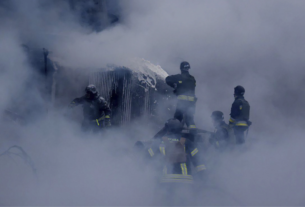Sri Lanka experienced a nationwide power cut on February 9 due to technical failures. Officials say the outage lasted several hours and affected millions across the country.
“Electricity was down for almost six hours, and businesses suffered,” said a shop owner in Colombo. Power outages have been frequent due to financial struggles and an aging power grid.
The Ceylon Electricity Board (CEB) said the failure was caused by a transmission issue. Engineers worked quickly to restore electricity, but the blackout highlighted weaknesses in the energy system.
Hospitals and essential services used backup generators to maintain operations. However, many small businesses faced losses due to the unexpected shutdown.
Frequent power cuts have disrupted daily life and economic activity. Factory owners reported production delays, while students struggled with online classes and schoolwork.
Public transport was also affected, with railway systems and traffic signals malfunctioning. Commuters faced delays as authorities tried to manage traffic manually.
The government has promised to improve the grid and ensure a stable power supply. However, Sri Lanka relies on fuel imports for energy, and high costs have made maintenance difficult.
“Energy security is a priority, but the country faces financial constraints,” said a government spokesperson. Authorities have struggled to balance fuel imports with the country’s economic challenges.
The ongoing energy crisis stems from both technical and financial problems. Sri Lanka’s power sector depends heavily on fossil fuels, making it vulnerable to price fluctuations.
Hydropower and renewable energy contribute to the grid, but not enough to meet rising demand. Poor infrastructure and outdated equipment have also increased the risk of failures.
Many citizens are frustrated with the repeated outages. Some say the government should invest more in solar and wind energy to reduce dependence on fuel imports.
The government has announced plans to modernize the electricity grid. Officials say they will focus on alternative energy sources and upgrading transmission lines.
Critics argue that past promises of energy reform have failed. Corruption and mismanagement have slowed progress, leaving the power sector unstable.
Sri Lanka’s economic crisis has worsened the situation. The country’s foreign exchange reserves remain low, making it harder to pay for energy imports.
Authorities say they are negotiating with international partners to secure energy investments. Some agreements involve joint ventures with private companies to improve power generation.
Businesses and households are demanding immediate solutions. Without reliable electricity, industries struggle, and economic recovery becomes more difficult.
Sri Lanka’s long-term energy strategy will determine the stability of its power supply. The government must act quickly to prevent further disruptions and protect the economy.




